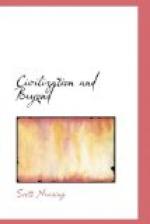Peace advocates mobilized wide public support for the “no more war” movement that developed during the closing months of the 1914-18 war; for the Briand-Kellogg Treaty of 1928 which renounced war as an instrument of policy; for the effort to secure general disarmament that resulted in the General Disarmament Conference of 1933 and for the United Nations Charter of 1945.
Official declarations in favor of disarmament and peace had been paralleled by the organization of unofficial peace committees and societies in western Europe, in the Americas and in the socialist countries.
Peace efforts had been strengthened by the outbreak of local wars—between India and Pakistan, between Israel and the Arab League; by wars of independence and liberation in Korea, Vietnam, Cambodia, North Africa.
Much of the public backing for the peacenicks came from student groups in official and private high schools, colleges and universities.
Nationalist liberation movements were active in settled communities such as Ireland and Canada’s Province of Quebec. There were less established movements in newly liberated restless ex-colonies and remaining colonies of the chief European empires, of Japan and of the United States. The widely advertised World Peace Council turned more and more from general advocacy of peace, such as the Stockholm Peace Petition, to the support of liberation movements among colonials and supressed minor nationalities.
Preparations for another general war were expanded and intensified as the competitive struggle for oil and other natural resources mounted. By the end of the 1960’s total arms expenditures of the chief powers were running at $200 billion per year. In 1973 the total reached $225 billion.
There was much general talk about peace, but the most insistent note sounded for a high level of spending on armaments. Britain’s Prime Minister Heath voiced a sentiment vigorously promulgated by every representative of national security “British interests come first”.
Confusion was heightened by the presence of men who faced all three ways: talking peace, waging small wars and preparing for the next big one. In February, 1974 in his State of the Union message to the U.S. Congress, President Nixon spoke of “our goal of building a structure of lasting peace in the world.” At the same moment the Washington administration was feeding the fires of war in South East Asia and asking the United States Congress to increase 1975 U.S.A. defense appropriations from $80 billion to $90 billion per year.
When war ended in 1945 there was a planet-wide sigh of relief and a devout hope that after so many years of local and general wars, the time had come for western man to take a long decisive step in the direction of peace. The United Nations Charter expressed this hope to end the use of war as an instrument of policy.
Since the period of general social relaxation usually known as the Dark Ages was superceded by the multiple innovations of the Reformation, the Renaissance, the Enlightenment and the scientific-technical developments of the 1750-1970 Revolution, man the dreamer, inventor, designer, planner, architect and engineer has modified many aspects of nature and transformed the social environment.




